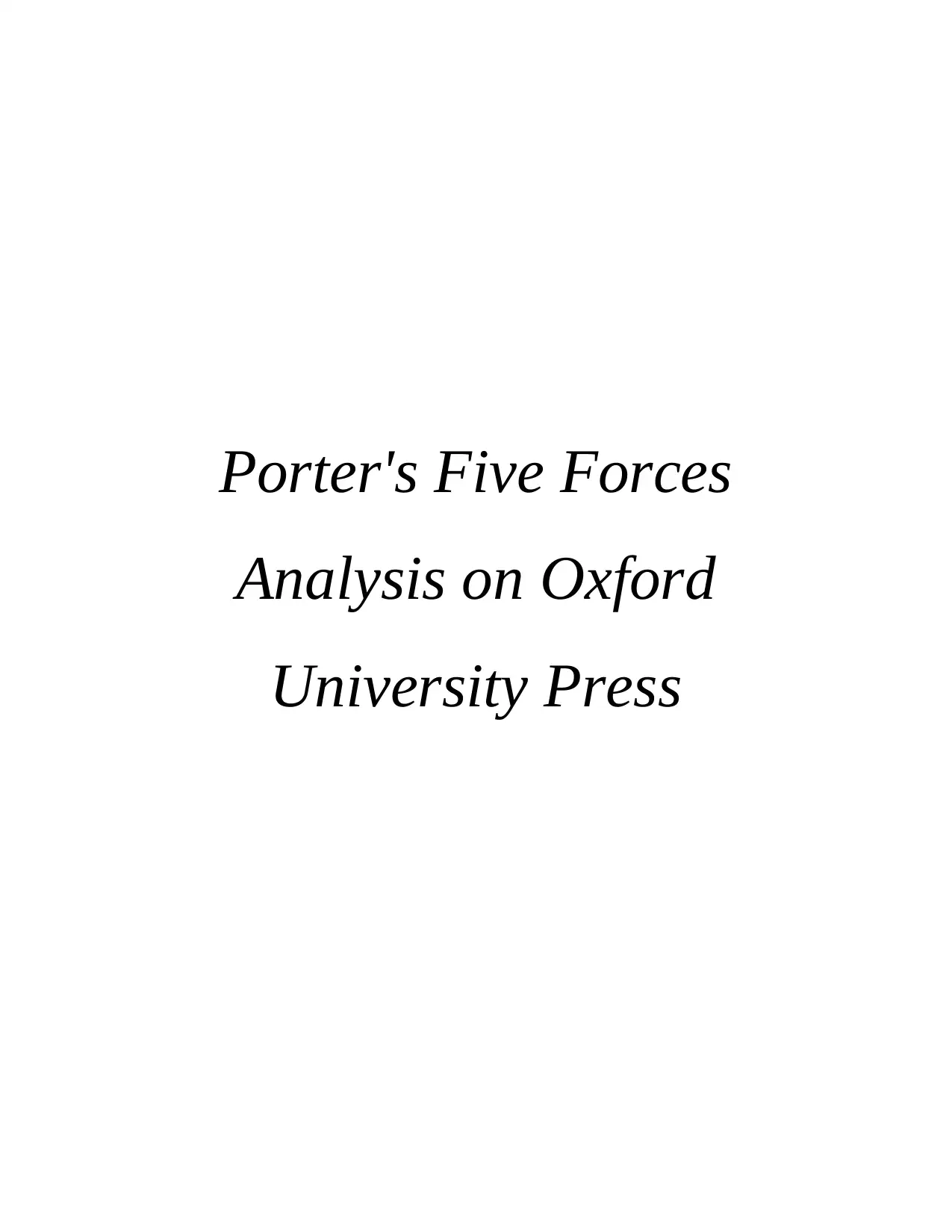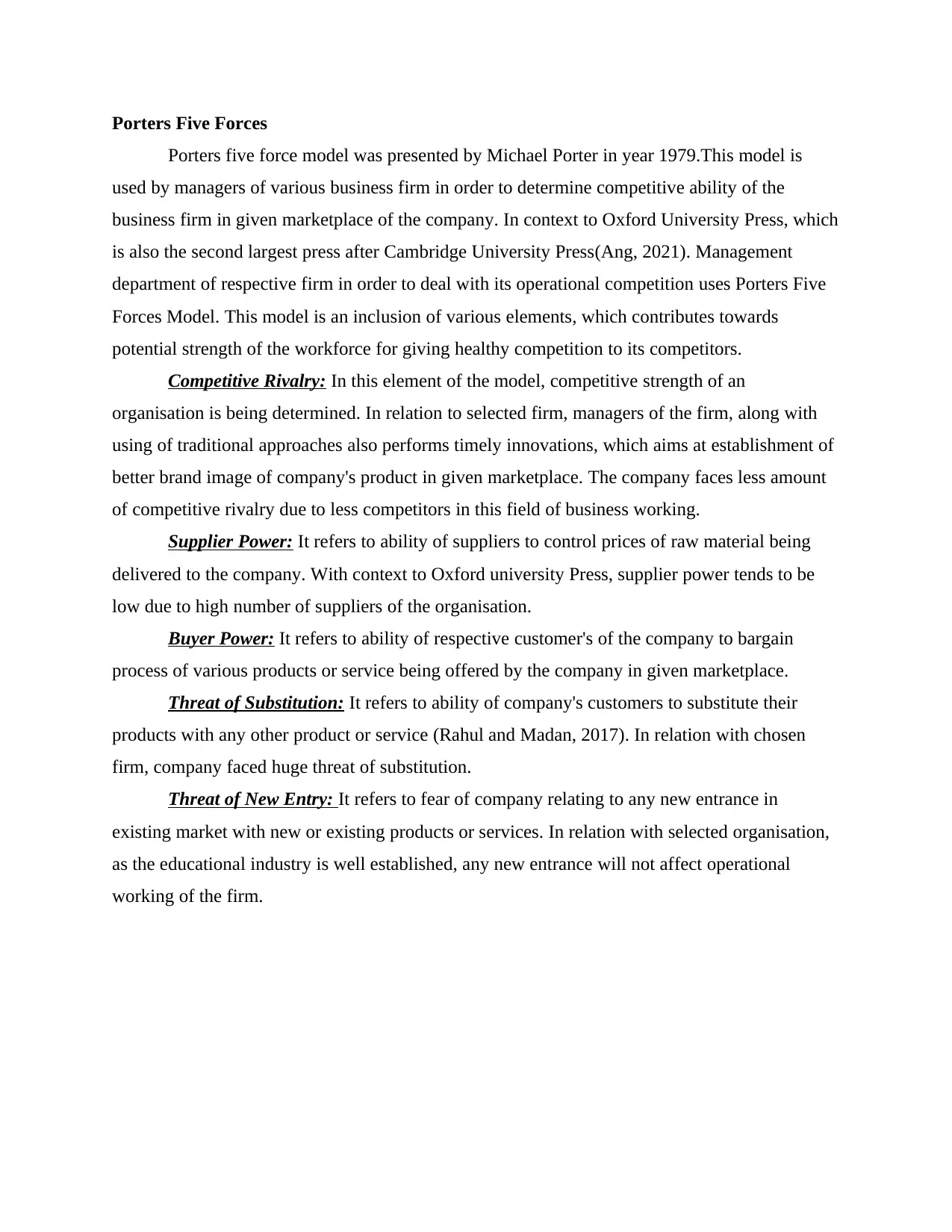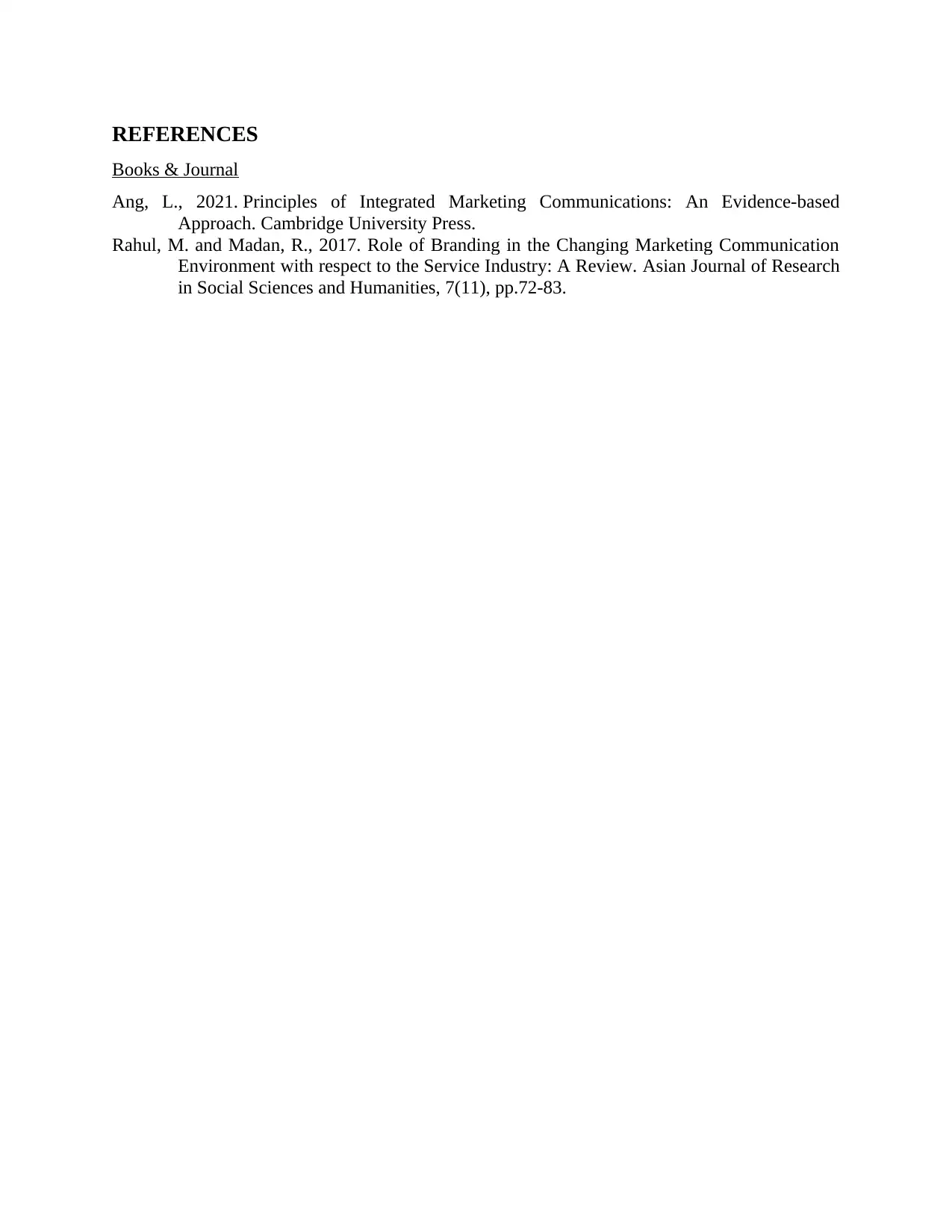Applying Porter's Five Forces Analysis to Oxford University Press
VerifiedAdded on 2022/12/26
|3
|435
|31
Report
AI Summary
This report presents an analysis of Oxford University Press using Porter's Five Forces model. The analysis examines competitive rivalry, highlighting the company's strategic approach to maintain its brand image and manage competition. It also assesses supplier power, indicating a low level due to a wide range of suppliers. The report explores buyer power, which is considered in terms of the customers of the company. The threat of substitution is considered, highlighting the impact of alternative products and services. Lastly, the analysis addresses the threat of new entry, noting that the well-established nature of the educational industry limits this threat. The report references relevant literature to support its findings, providing a comprehensive overview of the competitive dynamics impacting Oxford University Press.
1 out of 3










![[object Object]](/_next/static/media/star-bottom.7253800d.svg)